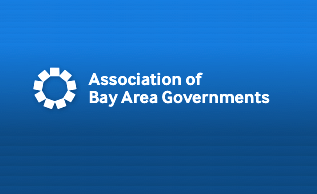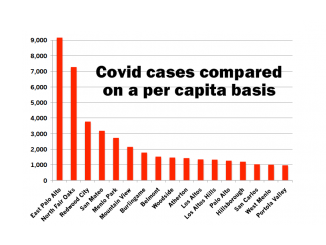
BY ELAINE GOODMAN
Daily Post Correspondent
Housing-production quotas for cities are now being developed for 2022 to 2030, and some officials said they’re worried that the quotas won’t account for the economic impacts of the COVID-19 pandemic.
The discussion of the quotas, also known as Regional Housing Needs Allocation or RHNA, came up last week during a meeting of the Association of Bay Area Governments’ executive board.
Los Altos City Councilwoman Anita Enander predicted a “near-term disaster” for cities if growth models that the quotas are based on are wrong.
“Why is that important?” Enander said. “It’s because the state increasingly bludgeons or threatens jurisdictions for failing to meet RHNA numbers.”
Enander doesn’t sit on the ABAG executive board, but spoke during the public comment period of the meeting. She said she was speaking on her own behalf. The comments followed a presentation to the ABAG board about Bay Area growth projections that will be used in the regional planning agency’s long-range planning document, Plan Bay Area 2050. ABAG also hosted a webinar on the growth projections on April 7.
The projections of population, jobs and housing growth cover the period from 2015 through 2050.
ABAG planners said they’re looking at ways to adjust the numbers to account for the impact of COVID-19, which has shut down much of the economy.
Meanwhile, the California Department of Housing and Community Development is working on housing-production quotas that will be handed down to regional planning agencies, including ABAG, for 2022 to 2030. ABAG then will take the regional quota and divide it up between cities and counties in the nine-county Bay Area. The agency expects to finalize the allotments next year.
State won’t adjust for downturn
ABAG will provide its growth projections to the state. But HCD typically bases its housing quotas on figures from the Department of Finance, Dave Vautin, a Plan Bay Area 2050 project manager, said during Tuesday’s webinar.
When asked whether the state would make adjustments to RHNA in light of a possible COVID-19 sparked recession, Vautin said “the short answer is likely a ‘no.’”
The issue came up again during Thursday’s (April 9) ABAG executive board meeting, which was held remotely using Zoom.
“We must, must try to delay our RHNA allotments by a year,” Lafayette City Council member Susan Candell said during the public comment period. “Literally, the world was able to delay the Olympics for a year. If we can’t delay them, then we need to fight really hard for an update in a year.”
Candell said she was speaking on her own behalf.
Credibility issue cited
ABAG board member Wayne Lee, who is the mayor of Millbrae, said having projections that reflect the impact of COVID-19 “is a question of reputation and credibility for ABAG.”
“This COVID-19 is going to affect our trend lines beyond 10 years,” Lee said. “If we just plough ahead and say, these are going to be the numbers, regardless of what’s going on, we’re going to have a credibility issue.”
According to ABAG’s latest projections, the Bay Area’s population will grow from 7.6 million in 2015 to 10.3 million in 2050, a 35% increase. The number of jobs in the nine-county Bay Area is also expected to increase 35%, from 4 million in 2015 to 5.4 million in 2050.
And the number of housing units will increase from 2.7 million in 2015 to 4.3 million in 2050, a 59% increase, according to the projections.
ABAG planners said the impacts of COVID-19 on growth projections might be felt through 2025. After that the projections might not change that much, ABAG said, because the model accounts for cyclical ups and downs in the economy.
Master plan for Bay Area
Plan Bay Area 2050 will be an update to the current long-term planning document, Plan Bay Area 2040, which was approved in 2017. The plan will include strategies related to land use and transportation. ABAG creates the plan in partnership with the Metropolitan Transportation Commission, or MTC.
Plan Bay Area doesn’t require cities to make any changes to local zoning, general plans or their project review process, but it includes incentives for them to do so.
For example, Plan Bay Area 2040 introduced a concept called Priority Development Areas, which is intended to concentrate housing and jobs near transit. Cities can choose whether to adopt the Priority Development Areas. And when they do, they may become eligible for grant money for transportation and planning improvements.




It’s funny to think these ABAG numbers mean anything. People have lost their jobs in droves, and they’re moving out of California. Businesses are shut down permanently. We’re going to be in a rut for years. ABAG should be working on a recovery plan, not housing quotas we’ll never reach or need.